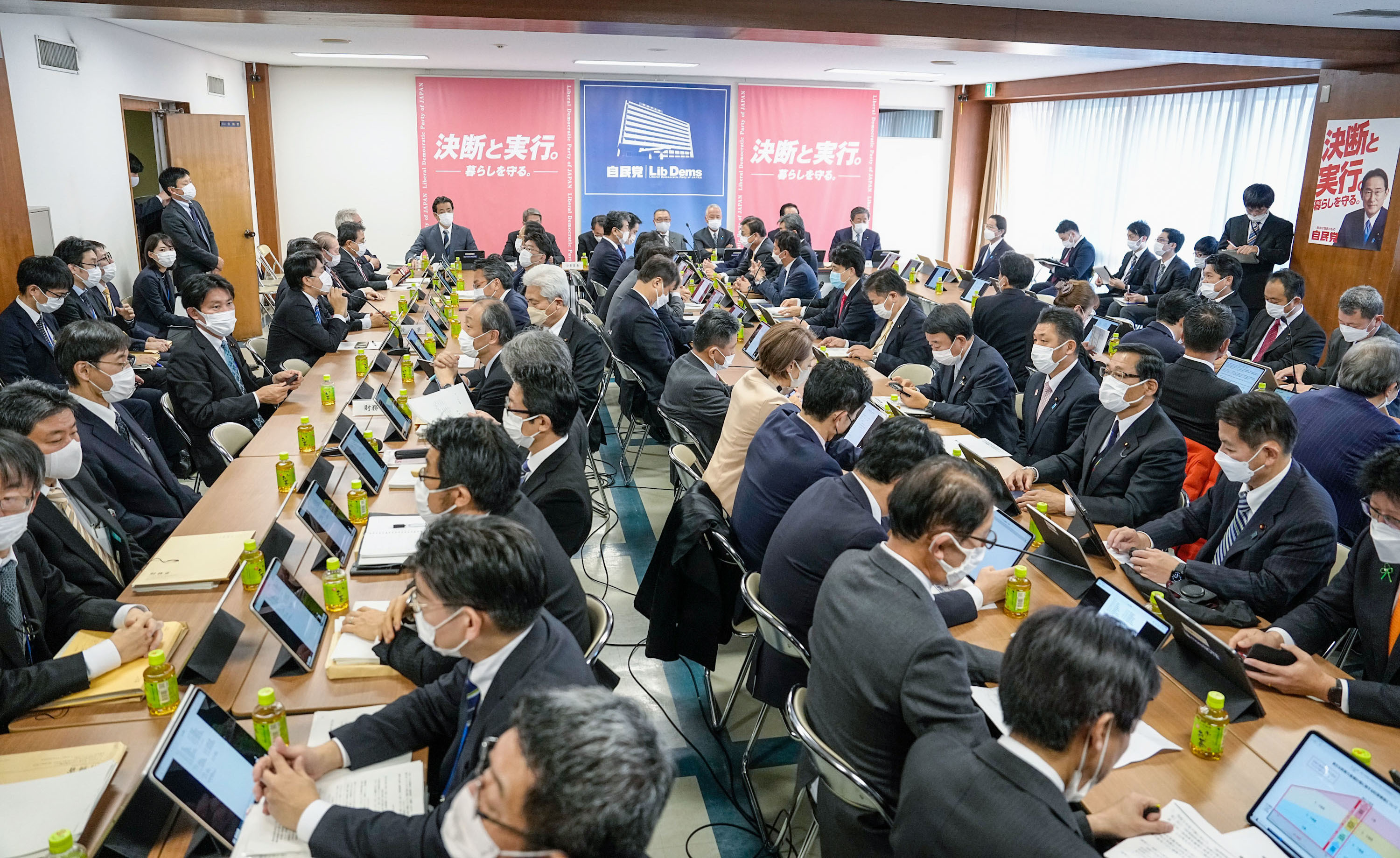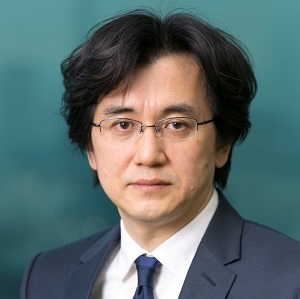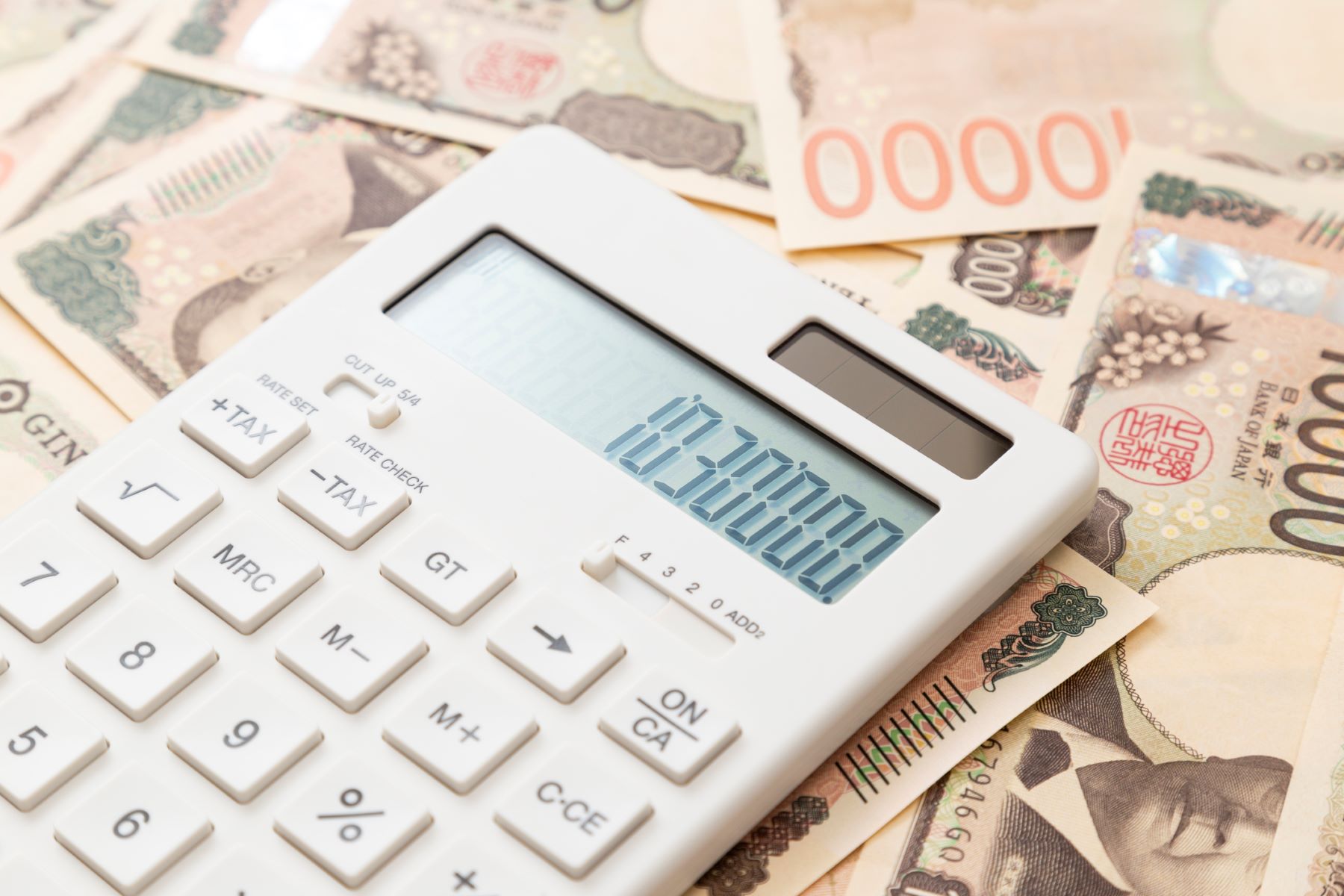
Paying for a Stronger Defense: A Shift in Japan’s Political Battle Lines?
February 2, 2023
R-2022-089E
Debate over the Kishida government’s plan to boost defense spending has focused not on ideological or constitutional issues but on how to fund the increase. Research Director Sota Kato explores the implications of this surprising shift in Japan’s political battle lines.
* * *
In a marked departure from previous patterns, recent government plans to beef up defense spending have triggered sharp disagreement within the ruling Liberal Democratic Party, while thus far eliciting only a muted response from the opposition. The issue received little attention during the extraordinary session of the Diet, which closed on December 10, 2022.
With the exception of the Japanese Communist Party, none of the major opposition parties have come out against the spending increase. In the runup to the July 2022 House of Councillors election, when the LDP pledged to boost the defense budget to 2% of gross domestic product by 2027 (up from 1%), both the Constitutional Democratic Party and Nippon Ishin no Kai (Japan Innovation Party) and Democratic Party for the People indicated that they backed a major increase. While the top opposition Constitutional Democratic Party of Japan emphasized the need for carefully targeted expenditures, the party’s leader, Kenta Izumi, expressed his support for the government’s basic direction on defense spending (see Izumi’s remarks at the Japan National Press Club, June 21, 2022).
The issue that has divided the LDP is not the buildup per se but how to fund it. Accordingly, the main arena where the battle has unfolded is the LDP Research Commission on the Tax System, which draws up and submits recommendations for tax policy revisions, not the party’s Research Commission on Security, where defense policy is discussed. The opposition’s first opportunity to launch a direct and detailed attack on the plan will likely be during the 2024 ordinary session of the Diet, when a tax bill based on the proposed changes is submitted to the legislature.[1]
The fact that economics and fiscal policy are dominating the debate over defense spending is a veritable sea change when seen in the context of Japanese politics in the post–World War II era.
Uniting behind Economic Growth, 1955–93
For almost four decades, beginning with the formation of the LDP in 1955, Japanese national politics was defined by the left-right conflict over constitutional and security issues. Under the political status quo known as the “1955 system,” the opposition Japan Socialist Party and its supporters did battle with the ruling LDP over the Japan-US security relationship in the context of the Cold War and Japan’s pacifist Constitution (Masumi 1964). The conflict boiled over under the government of Prime Minister Nobusuke Kishi with the Anpo Protests of 1960. With public opinion sharply divided over the revised Japan-US Security Treaty, millions of protesters took to the streets nationwide. Kishi pushed the treaty through the Diet, and by the time he was forced to step down in July 1960, his approval rating had sunk to 16.8%, according to a Jiji Press opinion poll (Osaka 2017).
By contrast, economic policy was seldom a flashpoint for clashes between the ruling and opposition parties under the 1955 system. When Prime Minister Hayato Ikeda took over from Kishi, he deliberately pivoted “from security to the economy.” His “income doubling plan” and other policies did much to heal the divisions that had rent Japanese politics and society, and he enjoyed a high level of public support throughout his four-year tenure.
Why were security issues so much more divisive than economic policy?
One reason is that the security dispute had an ideological component—particularly pertaining to Article 9 (Renunciation of War) of the Constitution—making it difficult to strike a compromise. This was a case of zero-sum politics in which it is difficult to find common ground.
By contrast, few took issue with goals like economic growth and income doubling. As the economy continued its rapid expansion, there was plenty of room to negotiate and cooperate on plus-sum solutions for distributing (or doling out) the fruits of growth in a manner that benefited everyone. Under the circumstances, it was difficult for the JSP to rouse popular opinion against the LDP economic policies. In response to Ikeda’s 10-year plan to double national income, the JSP floated a competing “long-term macroeconomic plan,” proposing to increase national income by 50% in 4 years (Suzuki 2019; Ito 1985). But with Ikeda’s plan achieving results, it is easy to see why the JSP’s half-hearted alternative failed to gain much traction.
Continuity amid Change after 1993
By the early 1990s, the economic and security environment had altered dramatically.
The LDP lost its House of Representatives majority in 1993, and in June 1994, after two short-lived non-LDP coalitions, the former JSP (today the much-diminished Social Democratic Party of Japan) entered into an unlikely coalition with the LDP, with Socialist leader Tomiichi Murayama serving as prime minister. To preserve the coalition, Murayama staked out a more pragmatic position on Article 9 and the Japan-US Security Treaty. The party’s Diet strength dwindled rapidly thereafter, along with ideological confrontation over defense policy and the Constitution, as the Cold War came to an end.
On the economic front, the high-growth years came to an end with the oil crisis of 1973, followed by a period of more moderate growth. And from the early 1990s, Japan entered a long period of minimal or negative growth. Total tax revenue, which had grown at an average annual rate of 15% between 1955 and 1973, stagnated after 1990 (although it has risen again in recent years, thanks primarily to increases in the consumption tax rate). At the same time, government spending continued to climb, owing in large part to higher social security and health-care costs attending the rapid aging of Japan’s population.
Under these circumstances, one might have expected the political battle lines to shift to the economic front. Once the economic pie had stopped growing, the distribution of benefits and costs could easily have spawned the kind of zero-sum political disputes that once surrounded security, as rival forces scrambled to grab a bigger share of the pie while avoiding a larger share of the costs. Yet until quite recently, the basic political dynamic of the 1955 system persisted. When hawkish security initiatives elicited a backlash, expansionary economic policies healed over the divisions. The second administration of Prime Minister Shinzo Abe from 2012 to 2020 epitomized this dynamic.
Abe’s Pivot from Security to the Economy
The security legislation that the Abe cabinet submitted in 2015 triggered a major clash between the ruling and opposition parties and huge demonstrations outside the National Diet building—the largest since the Anpo protests of 1960. The cabinet’s approval rating plunged below 40%, and non-supporters outnumbered supporters for the first time since Abe’s return to power (Jiji Press opinion polls).
Once the bills passed in September 2015, the ruling party’s leadership was vocal about the need to change the subject “from security to the economy.” (There was even explicit mention of Ikeda’s success in moving on after the turmoil of the Kishi years.) Summing up this viewpoint was the following statement by LDP Secretary-General Sadakazu Tanigaki at a press conference on September 8, 2015.
“Security issues in a way epitomize the left-right ideological divisions of postwar Japan, so when this is over, it seems to me that we need to shift the focus to common goals that the people can pursue together. Lately Prime Minister Abe himself has been going around telling people, ‘We have to get to work on the economy.’”[2]
Thereafter Abe devoted his attention to Abenomics, his government’s policy of fiscal and monetary expansion, and his approval ratings recovered. In this way Abe successfully steered the nation from the fraught issue of security to the economy, following the same formula as the one used in the transition from Kishi to Ikeda (only without a change in leadership). Unfortunately for Abe, in contrast to Ikeda’s era, Japan’s potential for economic growth was extremely limited, and Abe’s expansionary fiscal policy was supported primarily by government bonds and other types of debt.
How Permanent Is the Shift?
The current spat surrounding Japan’s defense buildup departs from the established pattern of postwar policy disputes in two ways.
The first is the absence of an ideological gulf between the ruling bloc and the largest opposition parties on the issue of defense spending per se. This doubtless reflects a shift in public opinion, which currently supports a larger defense budget according to most opinion polls. For example, even in December (when the rift in the LDP was daily in the news), a monthly survey conducted by NHK (Japan Broadcasting Corp.) found 51% in favor of the government’s plan to boost defense spending to ¥43 trillion over five years, with just 36% opposed. Other polls over the past six months or so have yielded similar results.[3] On the question of whether Japan should develop a counterstrike capability—a new objective incorporated into Japan’s basic defense policy in December 2022—55% answered in the affirmative, while only 31% said no.
The second way the current controversy departs from the norm is that the economic question of how to finance the buildup is the major bone of contention. It has already divided the LDP, and the opposition parties are sure to seize on the issue further down the road. Here again, public sentiment, which almost invariably opposes higher taxes, has been a key factor. In answer to a question on how the defense buildup should be funded, 61% of voters in the NHK’s October poll answered “budget cuts,” 19% chose “new bond issues,” and just 16% favored “tax increases.” While the majority of voters thus far have indicated support for a big boost in the defense budget, a considerable number could change their minds if told they will have to pay more in taxes to support those increases.
It would be premature, however, to conclude that the policy battle lines are being permanently redrawn. For one thing, the public’s hawkish turn that underlies the opposition parties’ tolerance for a beefed-up defense may not be permanent. Public opinion has no doubt been influenced by heavy media coverage of Russia’s invasion of Ukraine, on the one hand, and the potential threat from Xi Jinping’s consolidation of power in China, on the other.
For another, the economic dispute that has attracted so much attention could have been avoided had the Kishida government not chosen to link the jump in defense spending to the burden of financing it—in which case the budget increase would have sailed through with few objections from either the ruling or opposition parties. The controversy only flared because the benefits were paired with burdens, raising the question of how to defray and distribute the costs of a public good that benefits the nation as a whole.
Clarifying the Trade-off
Any expansion of government programs entails costs as well as benefits. But few prime ministers from Ikeda until now have clearly explained this trade-off to the public. During the years of rapid growth, when soaring tax revenues largely covered the costs of government programs, it was easy enough to divide the benefits without thinking too deeply about burdens. However, in our era of low and negative growth, when the pie has ceased to grow, the government must seek additional funding to pay for new spending, and distribution of the burden becomes an issue. As noted above, economic issues may become a focus of zero-sum politics in such an environment, as each group scrambled to maximize its benefits and minimize its costs.
Yet successive Japanese administrations have continued to dwell on the benefits of fiscal expansion without confronting taxpayers with the costs such programs entail, choosing to issue bonds instead of raising taxes. This is one of the main reasons Japan’s public debt has ballooned to a level seen almost nowhere else in the world. In effect, the government has shifted the burden to future generations who have no say in the matter.
The problem of benefits and burdens in the era of low growth is something that must eventually be confronted, though, and that is what Kishida finally did when he clarified the trade-off in bolstering Japan’s security. Under the present proposal, the costs of this public good are to be divided among private companies (via increases in the corporate tax), the general public (income taxes), and smokers (tobacco tax).
This plan is exactly what generated broad disagreement within the ruling bloc, and it is also likely to sow strife between the ruling and opposition parties going forward. Public opinion is firmly against the idea, which has emerged as an economic zero-sum conflict. The controversy has thrown into high relief the political consequences of presenting the voters with a stark trade-off and has doubtless scared off many politicians. Prospects that this style of policy making will catch on appear dim.
Reframing the Tax Issue
But is this backlash against higher taxes unavoidable? Politicians have often paid the price for asking voters to shoulder the burden of government programs, the classic example being the introduction and rate hikes of the consumption tax. But several recent empirical studies (involving countries other than Japan) have shown that public support can be secured for a tax increase if it is skillfully incorporated into a popular policy package or clearly linked to expenditures in a specific area (Bansak et al. 2021; Barnes et al. 2021). The Japanese government’s long-standing reluctance to link benefits with costs may actually be to blame for the public’s inability to see past the burden of higher taxes.
The public’s reaction to consumption-tax increases could improve if the government presented them as integral to a concrete policy package with clear benefits for taxpayers. The Foundation’s research program on fiscal and social-insurance reform (Plans for Sustainable and Politically Acceptable Fiscal Consolidation and Social Insurance Reform from the Perspectives of Behavioral Economics and Political Science) is currently conducting a study to determine how public opinion changes according to the relationship between burden and benefits. We look forward to presenting the results of this research and its implications for public policy.
Translated from an article originally published in Japanese on December 26, 2022.
References
Bansak, K., M.B. Bechtel, and Y. Margalit. 2021. “Why Austerity? The Mass Politics of a Contested Policy.” American Political Science Review 115-2: 486–505.
Barnes, L., J. Blumenau, and B.E. Lauderdale. 2021. “Measuring Attitudes toward Public Spending Using a Multivariate Tax Summary Experiment.” American Journal of Political Science 66-1: 205–221.
Ito, Masaya. 1985. Ikeda Hayato to sono jidai—Sei to shi no dorama (Hayato Ikeda and His Times—A Drama of Life and Death). Tokyo: Asahi Bunko.
Masumi, Junnosuke. 1964. “1955-nen no seiji taisei” (The Political Regime of 1955). Shiso, April.
Osaka, Iwao. 2017. “Shijiritsu ga nyojitsu ni shimesu ‘ikkyo’ no sugata” (Abe’s Predominance as Revealed by His Public Approval Ratings). Ronza, June 14.
Suzuki, Hironao. 2019. “Ikeda seiken to kodo keizai seicho” (The Ikeda Administration and Rapid Economic Growth). Ritsumeikan Kokusai Kenkyu 31-5.
[1] The document “Reiwa 5-nendo zeisei kaisei no taiko” (Outline of FY 2023 Tax Reforms), adopted by the cabinet on December 23, 2022, states that tax increases to finance the defense budget are to be “implemented at an appropriate time in or after 2024.” https://www.mof.go.jp/tax_policy/tax_reform/outline/fy2023/20221223taikou.pdf. For an English summary, see https://www.mof.go.jp/english/policy/tax_policy/tax_reform/fy2023/05keyhighlight.pdf.
[2] Sadakazu Tanigaki, press conference, September 8, 2015, https://www.jimin.jp/news/press/130364.html (Liberal Democratic Party website)
[3] In some polls released in late December 2022, when this piece was in the final stages of preparation, opinion was roughly divided for and against the planned increase in defense spending. (See, for example, the December poll conducted by FNN [Fuji News Network].) Given the intense media coverage of the split within the LDP over Kishida’s plan to finance the buildup with tax increases, the change in numbers may reflect resistance to beefing up defense if it means higher taxes.
![]()
Subscribe to the Tokyo Foundation for Policy Research eNewsletter.



